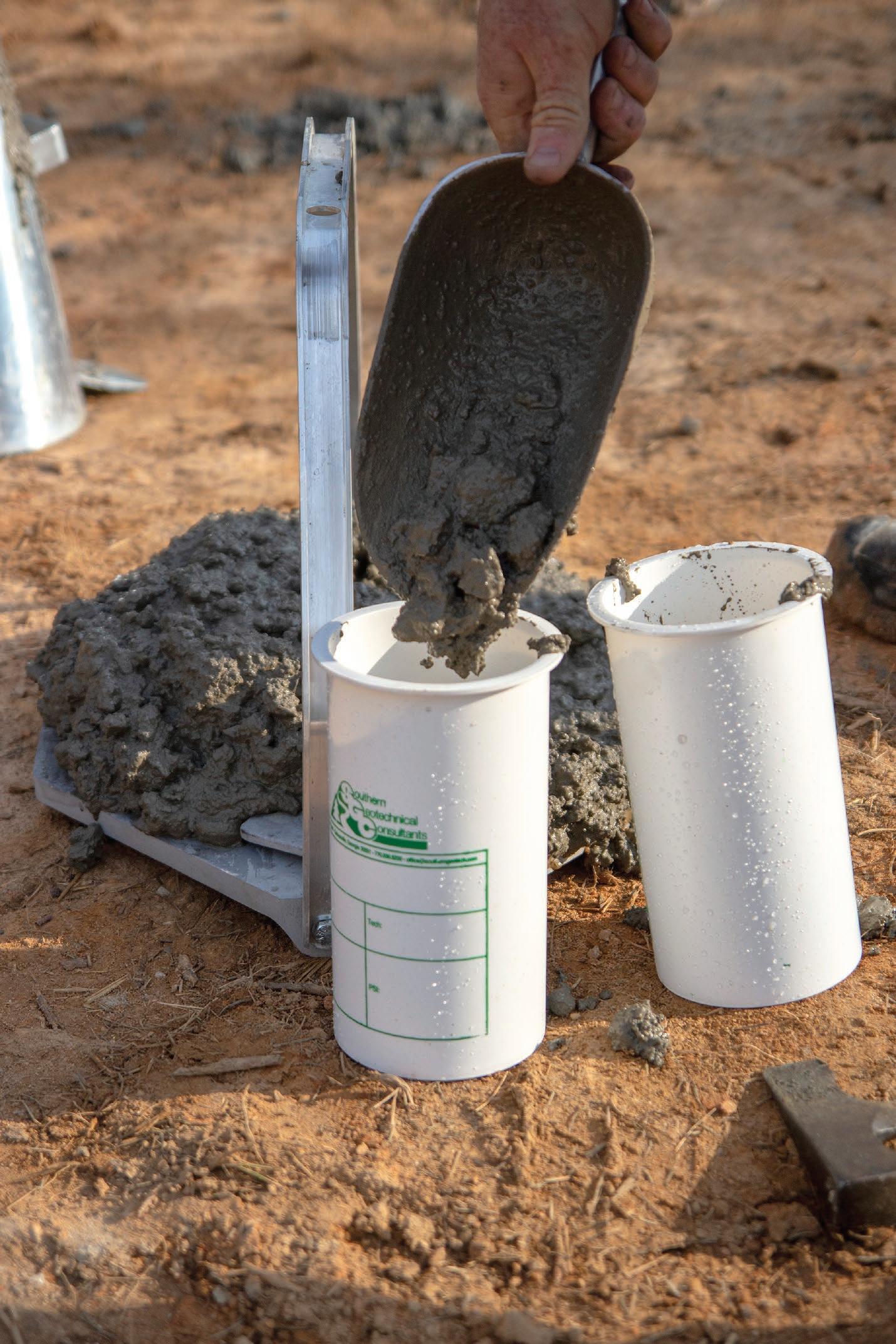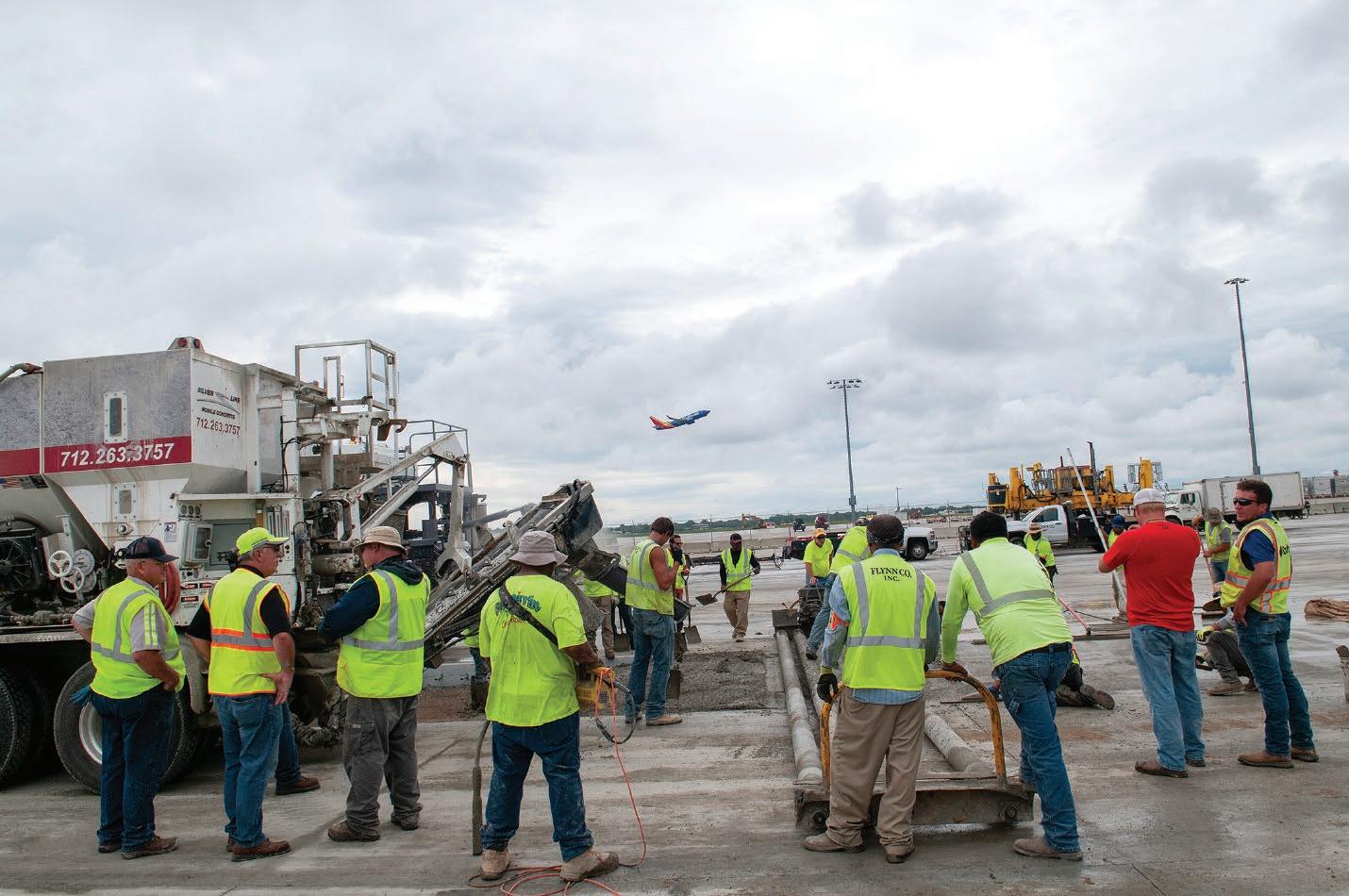
5 minute read
Going Mobile: How Airports are Embracing the Mobile Cement Plant
James Butler, Staff Writer
Airport surfaces need to be tougher, more durable and faster to lay, which is why mobile units that can batch and mix concrete on the spot offer important advantages.
FOR DECADES, airport runways have relied on a similar approach to laying cement. In the first instance, a batch is produced and then transported to the works location. However, several factors are combining to encourage a move to mobile cement plants which mix the cement there and then on the spot. With operators now working on increasingly fine margins, the time is right for many airports to go mobile.
Runway surfaces are one of the most important features of an airport.They have to ensure the safe arrival and departure of aircraft and handle an increasing volume of traffic. With the strain placed on tarmac increasing every year, keeping it in top condition is crucial. At the same time, airports operate in an environment in which every penny and every second is critical. To meet these challenges, operators will have to be innovative and embrace the latest technology available.
Rethinking Surfaces
Today’s runways come under strain from all angles. Aircraft are becoming heavier and flights more frequent. Regulations are strict. The ICAO’s Annex 14 document 3 requires asphalt surfaces to: • be constructed and maintained without deviations of bumps which would affect aircraft operations. It must be resistant to shearing and rutting to remain smooth and free draining; • have good friction characteristics when the surface is wet; • be maintained free of loose material on the surface to prevent damage to the aircraft. In practice, this requires airport asphalt to be durable and resistant. Some of these regulations are contradictory. It is possible, for example, to construct a highly deformation resistant mixture with coarsely graded asphalt, but such a mixture is unlikely to be durable. Accordingly, any surface mixture will always have to be a balance of these requirements to produce something which meets the demands of the regulator.
Equally, each surface will require a regular schedule of maintenance and measurement to ensure it remains compliant. Any surface which requires high levels of maintenance and regular repair will increase the costs of daily operations and eat into the financial sustainability of the operation.
Today, this is becoming increasingly serious thanks to the greater demands being placed on surfaces. The methods used in the construction of runway surfaces still often trace their origins back to the 1940s and 50s. As such, most runway surfaces are constructed from asphalt surfaces which are 40 to 60mm, densely graded with grooves sawn across them to promote skid resistance.
However, as a paper in ScienceDirect shows, 4 aircraft have become much heavier and more demanding on runway surfaces. The report suggests that, as a result, traditional airport asphalt specification has failed to guarantee good aircraft surface performance.
To counter this issue, airports have been looking at alternative asphalt mixes with fresh approaches and equipment taking the modern airport away from the traditional approach to surfacing. For example, in the 70s and 80s, airports such as Norfolk Naval Air Station, Fallon Naval Air Station as well as commercial airports (Newark International Airport, John F. Kennedy International Airport, and Tampa International Airport) started to use fiber reinforced concrete 5 . According to a report from the National Concrete Pavement Technology Centre, “A 20-year survey of the post-tensioned FRC section (1,200 ft in length) and FRC-only sections with transverse joint spacing varying between 85 and 200 ft demonstrated that the taxiway is experiencing excellent performance.” Runway surfaces are one of the most important features of an airport. They have to ensure the safe arrival and departure of aircraft and handle an increasing volume of traffic
A VOLUMETRIC MIXER POURS CONCRETE INTO A BUCKET FOR A BRIDGE PIER PROJECT.
Faster setting mixes, meanwhile, such as belitic calcium sulfoaluminate (BCSA) cement, can be ready for use within three to four hours. Although double the cost of conventional Portland cement, it drives down the time required before a runway can be open for traffic again as well as improving the durability of the surface. It has also been used in low carbon footprint mortars and presents an option for airports looking to meet their carbon goals. However, there are concerns about the hydration process 6 , which starts immediately and can reduce the available time to pour and place the concrete.
Mobile Cement Mixers
This lower time limit is one reason why mobile concrete plants are becoming more popular. CemenTech, for example, focus on what they describe as Volumetric mixing, which involves a batch plant and mixer in a single unit. These mobile mixers can be driven to the site and can batch, measure and mix the concrete from one unit. This is faster, requires less down time and allows fresh concrete to be poured wherever it is needed. Mixes can be adjusted as and when required and can be tailored to a precise design and mix 7 .
Mobile plants such as these work faster and are more flexible than most conventional cement mixers. They give operators the option of using any type of design or mix in any environment. They can adjust designs or move location at short notice, and reduce waste and downtime. Teams can deliver precise amounts of mix in the exact location without the delay of waiting for a mix to be brought to their location.
Volumetric mixing also helps teams perform faster repairs in more remote locations and harsher environments. An extreme example of this could be seen in 2016 when a team of US engineers arrived at Qayyarah Airfield, 40 miles outside Mosul in Iraq. After two years of occupation by ISIS, the runway had been damaged seemingly beyond repair.
However, in a project which had never been attempted within Iraq, the team managed to clear an area the size of 33 football pitches laid end over end and, using ADRs rapid repair mixers from CemenTech, laid down more than two million pounds of concrete on a runway of slightly more than a mile. The runway was inspected and certified and Qayyarah Airfield was quickly open for business once more 8 .
With the demands of surfacing becoming more complicated, mobile batch and mixing plants offer substantial performance, cost and efficiency gains to airports. They help them to work faster, to be more flexible and more sustainable. It’s a solution which can help airports produce more durable, high performance surfaces which reduce the cost of maintenance and downtime. In an environment in which small gains are crucial, ‘volumetric’ surfacing is increasingly appealing.






